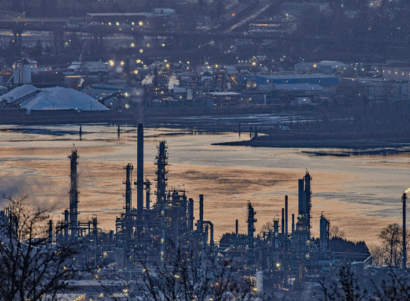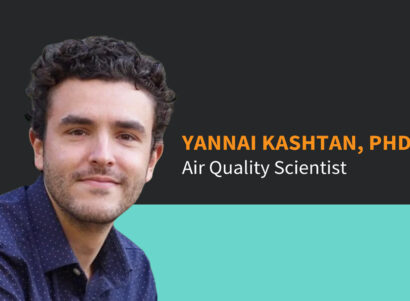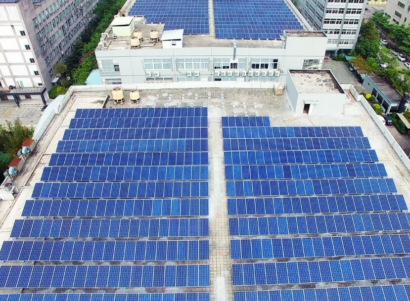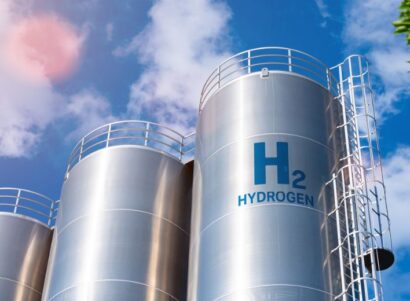For decades, global efforts to address climate change largely focused on lowering carbon dioxide emissions. In recent years, however, efforts to reduce methane emissions have increased. Methane is concerning because it is 86-times more potent than carbon dioxide at trapping heat in the atmosphere over the 20-year time horizon, even though it is relatively short-lived compared to carbon dioxide.
In a few short weeks, President Biden will attend the United Nations (UN) climate change conference in Egypt. At COP 27, global attention will focus on cutting methane emissions, which science has shown is one of the most impactful ways to limit near-term climate warming.
Curbing Methane Emissions
Relative atmospheric concentrations of methane have grown more than twice as fast as that of carbon dioxide since the beginning of the Industrial Revolution. We know that more than half of methane emissions come from leaks at refineries, coal mines, and landfill sites. Fossil fuel operations globally emit hundreds of millions of tonnes of methane each year. Much of these emissions are simply leakage along the production and supply chain that operators fail to capture. The International Energy Agency (IEA) estimates that more than 70% of current emissions from oil and gas operations are technically feasible to prevent and around 45% could typically be avoided at no net cost because the value of the captured gas is higher than the cost of the abatement measure. We have the tools to do something about this.
Technology exists to identify, capture, and even use methane emissions as a source of energy. Methane-sensing satellites, for example, can use imagery to pinpoint where methane is escaping. There also are a number of methane capture technologies that are worthy of attention, including using zeolite—an inexpensive and abundant type of clay, that is capable of soaking up the gas. Another method is to capture methane and use it to produce either hot water, electricity, or pipeline-quality natural gas.
Rapid Action Needed at the Federal and State Levels
In the United States, both the federal and state governments have important roles to play in cutting methane emissions from oil and gas facilities, some of which are already underway. The United States Environmental Protection Agency proposed a methane rule that would lower methane emissions by 41 million tons between 2023 to 2035. The strength of the final rule should have important consequences for climate change. The recently passed Inflation Reduction Act (IRA) also takes on methane leaks, implementing a new methane fee and incentivizing states to implement their own methane emission control rules.
In order to achieve President Biden’s goal of reducing greenhouse gas emissions 50 percent by 2030 compared to 2005 levels, states must also take action to lower methane emissions. States have the power to decide what energy resources their electric utilities use, and they are the primary regulator of companies that deliver electricity to consumers. The IRA provides new funding for states to address methane, including $20 million for state and local agencies to monitor methane emissions. More funding will almost certainly be needed. This year, the Department of Energy invested billions of dollars in carbon capture and similar commitments for methane reduction are warranted.
Cutting Methane Emissions Protects Public Health
States that do take action to lower methane emissions will reap important public health benefits. Aside from lowering exposure to health damaging air pollutants associated with oil and gas operations, lowering methane emissions is essential to mitigating the increasing severity of climate impacts already being experienced around the world. Unprecedented record-breaking temperatures made the summer of 2022 one of the hottest, if not the hottest, on record. Extreme heat waves used to be rare, but now are much more frequent, intense, and deadly.
The EPA and states have the legal ability to implement strong methane regulations. The UN is committed to slashing methane emissions and over one hundred and twenty countries have joined the UN Global Methane Pledge, committing to lower methane emissions from anthropogenic sources by at least 30 percent below 2020 levels by 2030. Yet despite all this, methane rose to record levels in 2020.
Over the past decades, the global challenge of addressing climate change has been the focus of numerous, well-intentioned national and international conferences. While the delegates routinely sound the alarm about climate change, nations have been slow to implement meaningful policies. We have the tools to slow and even reverse this crisis. Reigning in methane emissions may be our best near-term hope of protecting our climate and public health.
















